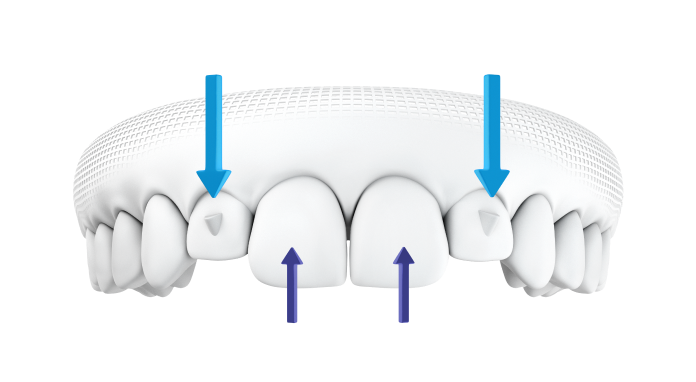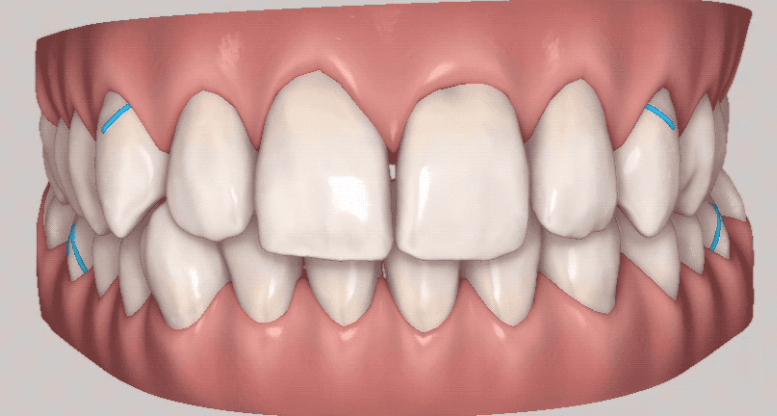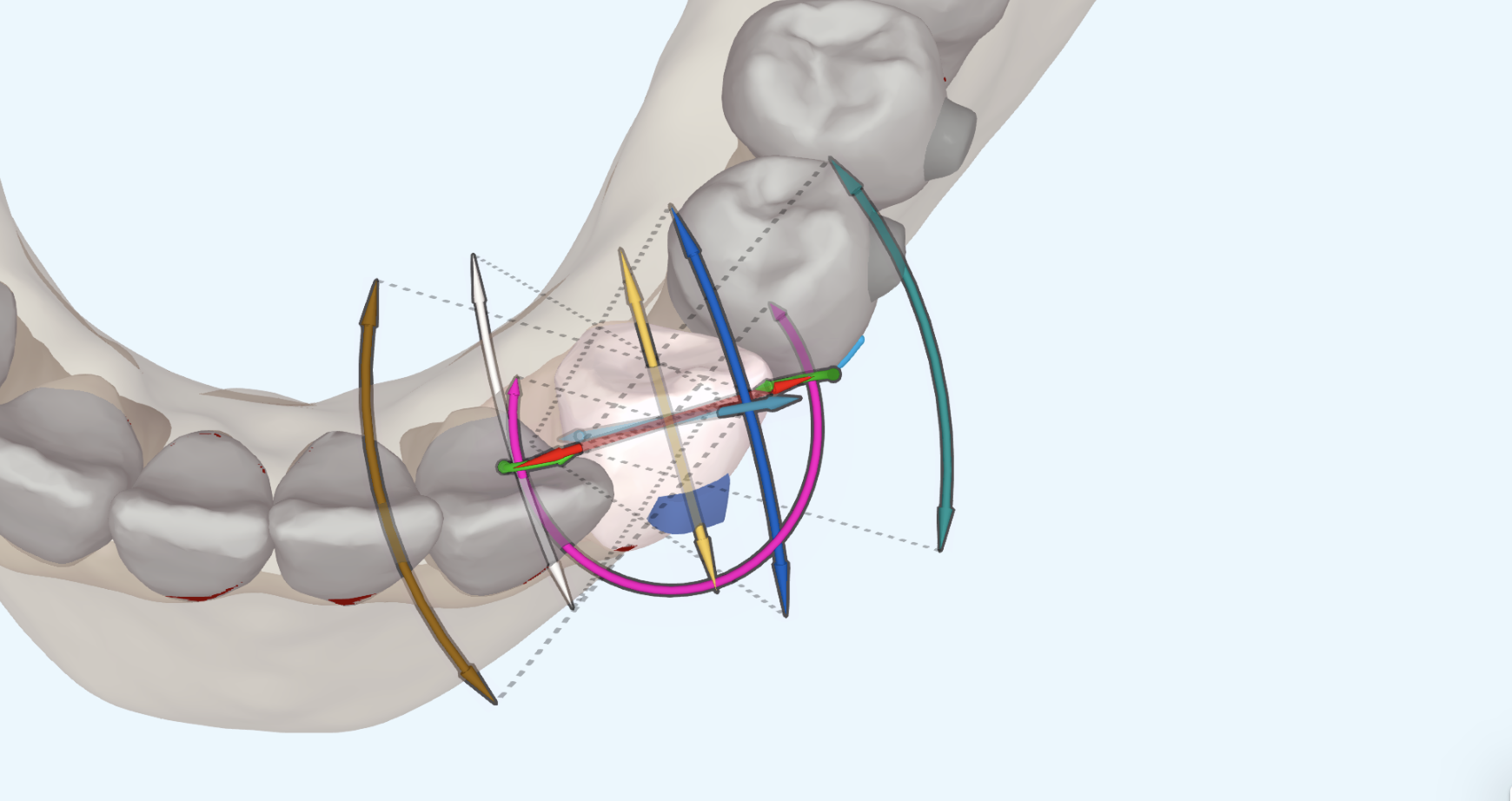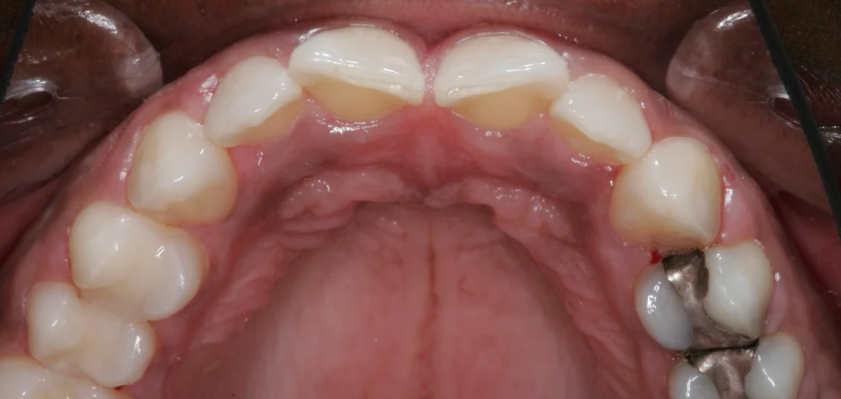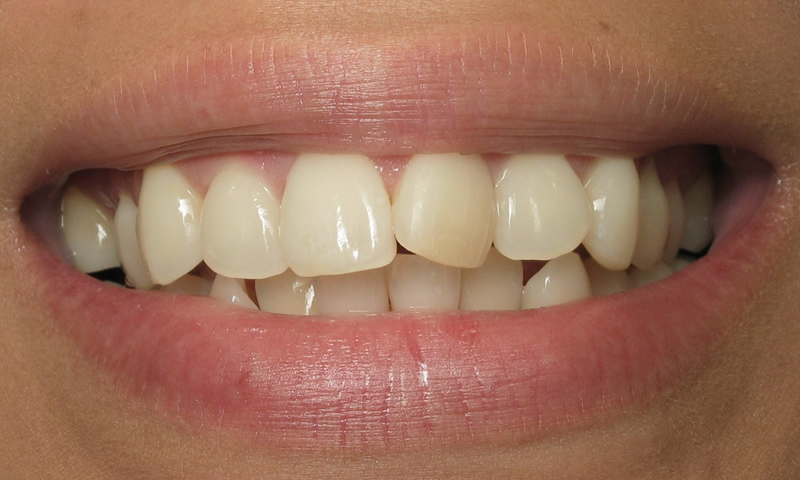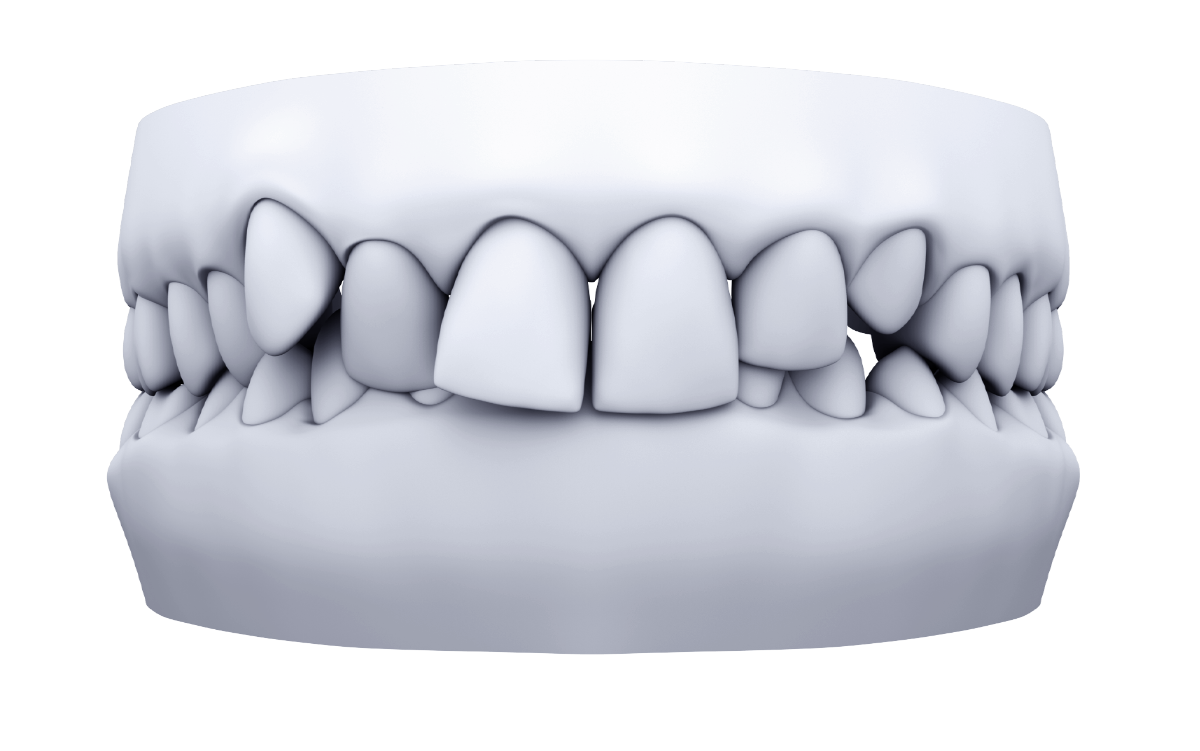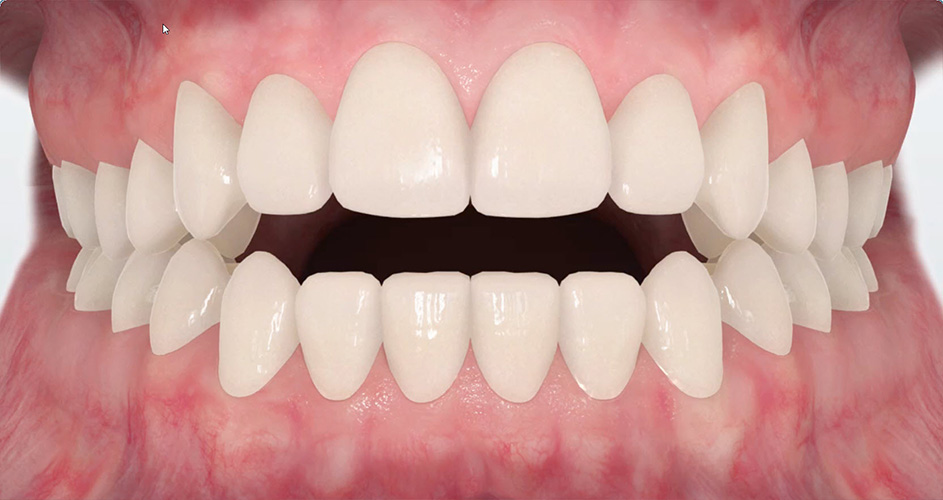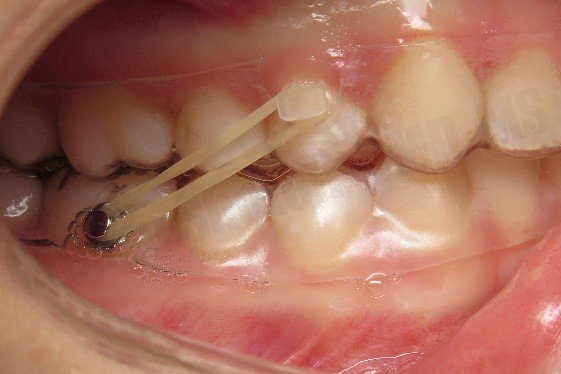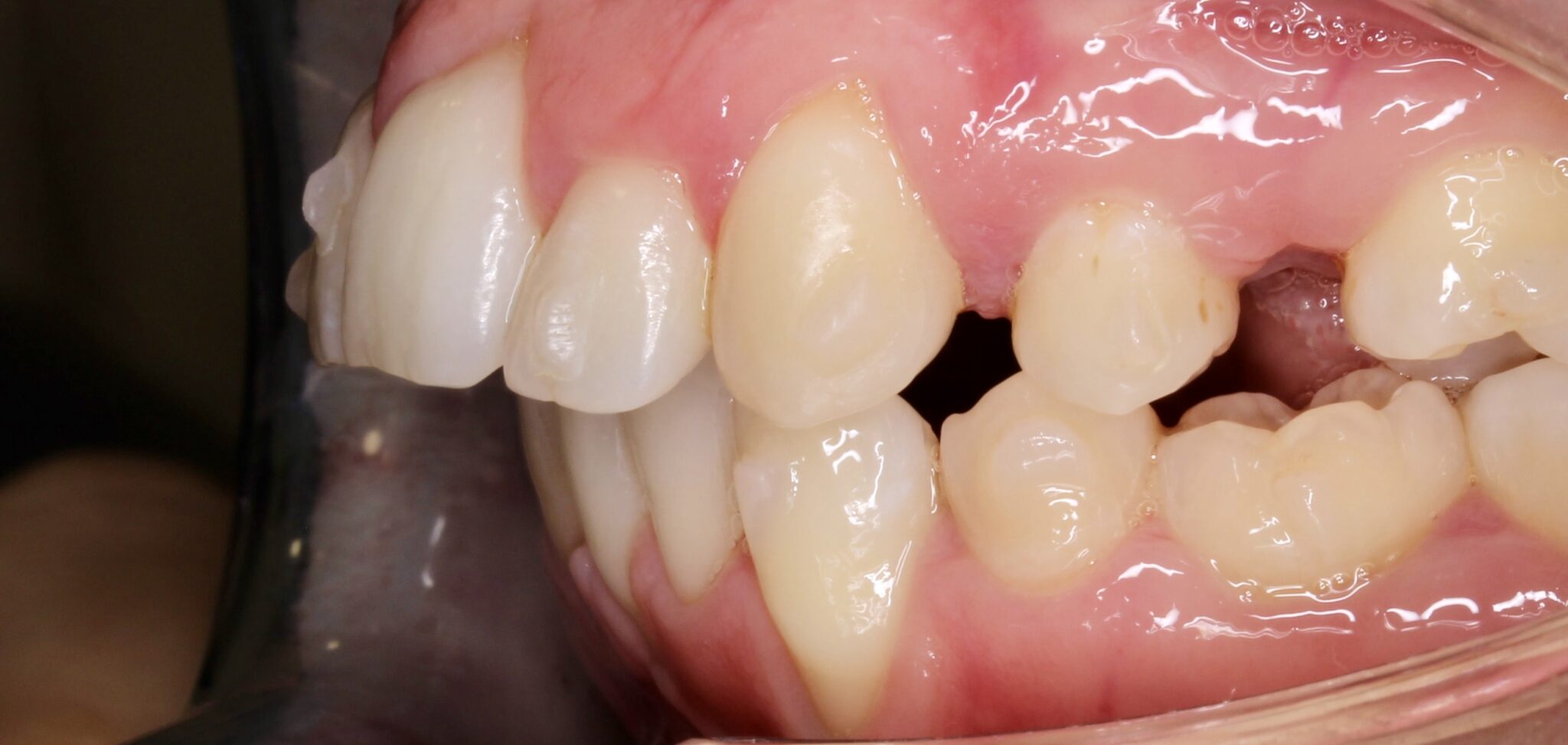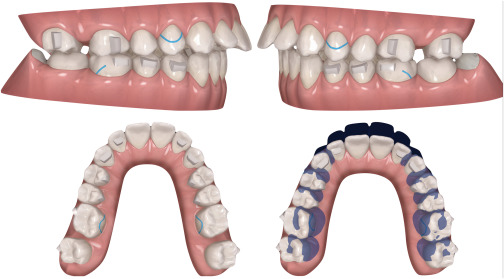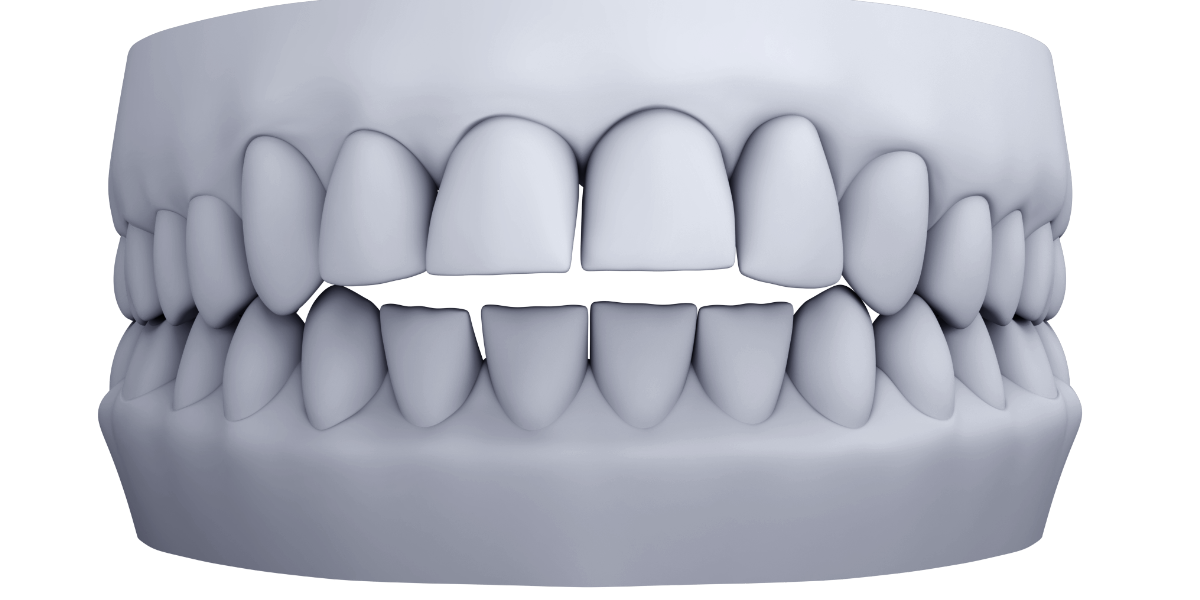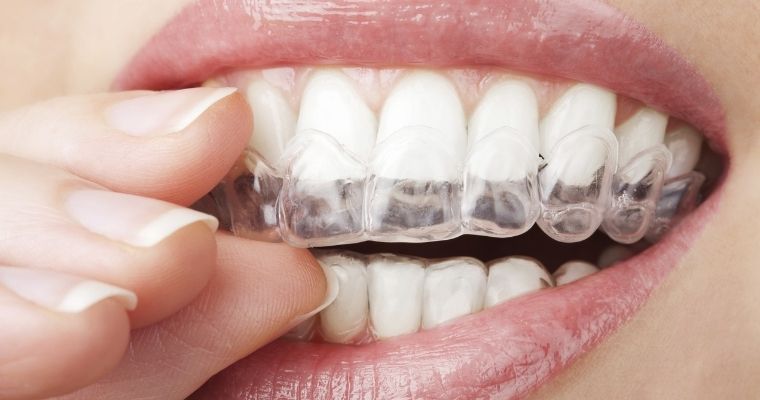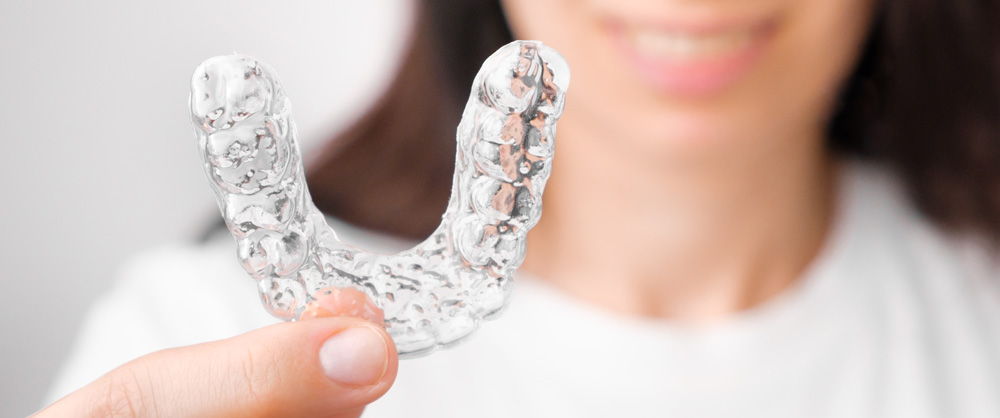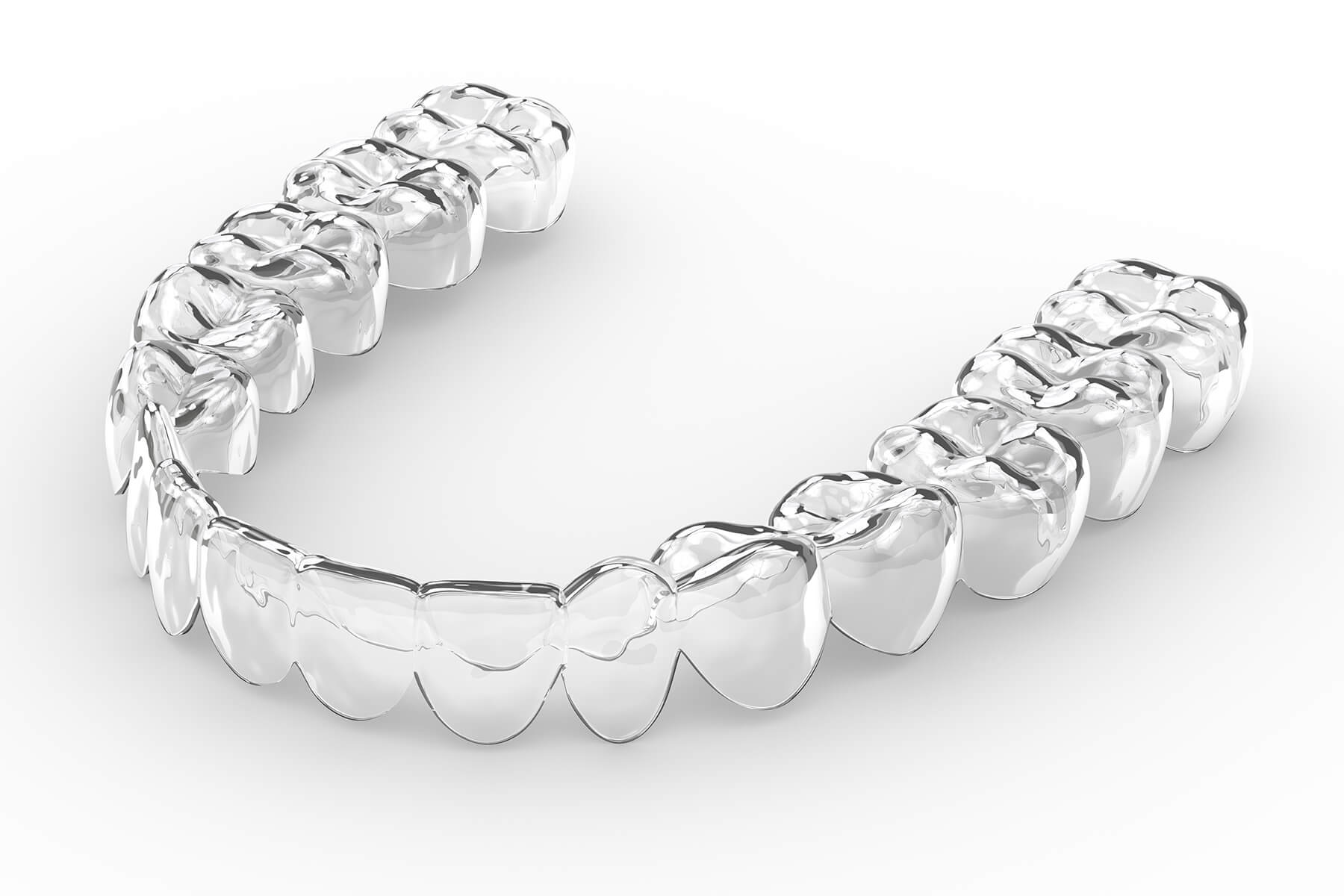Root torque
- Add additional lingual torque in cases where there is noticeable retroclination (lingual crown tip).
- Request constant lingual root torque in spacing cases where anterior teeth are being retracted.
- Request additional labial root torque in cases where anterior are being proclined.
Upper teeth palatal root torque. Attachments
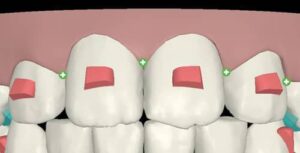
Prescribe the desired palatal root torque, but I ask my technician to delete the power ridges and add 3 mm wide gingivally beveled rectangular attachments to keep the aligners fully engaged on the teeth.
Retroclined upper incisors
Add an additional 5-8 degrees of lingual torque.
Clincheck instruction requesting additional torque:
“I see that you have added torque to teeth ___. After the ideal torque is obtained in Clincheck, add an additional 5 degrees. I prefer to “over-treat” torque. All torque is to be performed in the regular (NOT over-correction) stages.” (Hint: Play the Clincheck movie to see the torque. If you can see it, request over-treatment. You can also add more torque using Clincheck Pro 3D controls)
Clincheck comment instructing technician you want lingual root torque applied during retraction to close spacing:
“Please apply lingual root torque during the entire retraction process for teeth _____ (specify teeth or quadrant).”
ANTERIOR ROOT TORQUE
- Torque forces involved have a tendency to push the aligner incisally.
- When considering the forces involved, a distolingual rotational force is applied to the incisor roots, resulting in a resisting force at the distal of the first molars; pushing them anteriorly. In this manner, the molar is squeezed mesially and it tends to tip and intrude mesially; tipping and lifting out of the aligner.

SOOLUTIONS
- Applying a large attachment on the first molars may assist in limiting this type of disconcerting “openbite”.
- If anterior torque is treatment planned, then it may be more predictable to add mesial root tip and/or extrusion of the mesio-buccal cusps of the first molars from the start.


